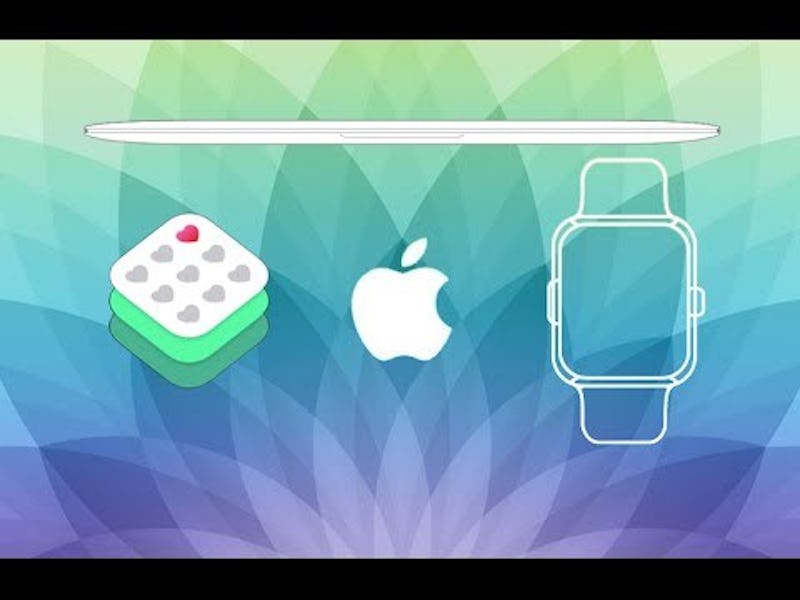How Apple Can Fix Researchkit's Problems This Week
The company's medical research platform just needs a few tweaks to be something special.

There was no shortage of excitement when Apple introduced Researchkit to the medical community in March, touting it as a new way to turn iPhones and iPads into powerful new tools for biomedical research. Apple’s idea was simple: allow people to use their devices to send data about their health back to scientists who could use it to help discover or develop the next medical breakthrough. Instead of working from a sample size of a few hundred or a few thousand, researchers could potentially measure medical data from millions of people all around the world. Academic institutions from the University of California, San Francisco, to private companies like GlaxoSmithKline quickly made serious moves to implement Researchkit into their clinical research endeavors.
Yet Researchkit wasn’t — and still isn’t — ready for prime time. You can’t just introduce a new software platform and decide it will change medicine as we know it. While smartphones are quickly finding their way into the hands of people with very modest incomes, iPhones are still a premium, predominant among the young, the wealthy, and people of white and Asian descent.
That’s useless if you need a broader demographic, or if you’re trying to study people of lower income or of varied races. Stanford University researchers were stoked to get 11,000 people in 24 hours to sign up for their cardiovascular study, but that doesn’t offer a representative sample if they’re all well-educated individuals with great health care.
There’s also the issue of consent — theoretically, anyone with a smartphone could sign up for a medical study, including minors who aren’t eligible without parental consent. Or non-asthmatics for an asthma study. I could sign up for a breast cancer study, even though I’m a man. Hell, I could be a dog and do as I please and no one would be the wiser.
The biggest problem might actually be Apple’s hardware itself. The company’s devices are not exactly a state-of-the-art research tool that can provide scientifically accurate data. Smartphones are about making life easier and streamlined — not conducting clinical trials. The instruments are pretty much limited to the accelerometer, touch screen, microphone, and camera. The ResearchKit apps can only gather only rudimentary data — like using the phone’s accelerometer to count footsteps as a proxy for assessing physical activity, or counting on the Apple Watch to track heart rate. Useful, sure, but not the most accurate measurements for meaningful research.
And if a participant accidentally hits a button, or forgets to a hit a button, or forgets ever to hit all the buttons after downloading the app? Or answers questions inaccurately with no physician there to catch the mistake? You get a lot of misleading data to manage through. If all that false noise accumulates too much, the study becomes bunk.
Some of these problems take an easy fix. The aforementioned issues with recruitment demographics and consent could be fixed with a more lengthy and verifiable vetting process — and that’s not really a hard thing to implement.
What about the hardware flaws that affect ResearchKit? Every new version of every Apple device always boasts an improvement in technological capability, and this year’s September event for the company is expected to be no different.
The new iPhone camera is expected to come with a 12-megapixel camera, as opposed to the 8-megapixel on the current iPhone 6s. This would help participants send better qualitative information. A better version of Siri might help some users navigate through ResearchKit apps a bit easier. The new Force Touch screen might be able to take more accurate measurements of pressure and touch-sensitive data, like pulse.
Apple might announce a new iPad as well — one with a bigger screen. Clinical researchers looking to use Researchkit could potentially take advantage of this to gather bigger swaths of data — perhaps full-hand or footprint pressures.
It would also be nice to see Apple expand the hardware to be able to measure health data that doesn’t even necessarily involve a person. What if the new iPhone or Apple Watch could track sunlight intensity and gauge UV radiation? What if it could measure ambient noise pollution levels while walking down the street? What if there were a sensor to track toxins in the air and send this data back to environmental health researchers?
But this is just speculation. We won’t know till Wednesday’s event what kinds of upgrades to the technology we’re going to see in Apple’s devices — and how they are going to help medical researchers looking for new ways to conduct studies.